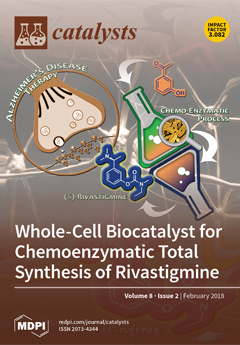During the past two decades homoleptic tetramethylaluminates of the trivalent rare-earth metals, Ln(AlMe
4)
3, have emerged as useful components for efficient catalyst design in the field of 1,3-diene polymerization. Previous work had focused on isoprene polymerization applying Ln(AlMe
4)
3 precatalysts with Ln = La, Ce, Pr, Nd, Gd and Y, in the presence of Et
2AlCl as an activator. Polymerizations employing Ln(AlMe
4)
3 with Ln = La, Y and Nd along with borate/borane co-catalysts [Ph
3C][B(C
6F
5)
4], [PhNMe
2H][B(C
6F
5)
4] and [B(C
6F
5)
3] were mainly investigated for reasons of comparison with ancillary ligand-supported systems (cf. half-sandwich complexes). The present study investigates into a total of eleven rare-earth elements, namely Ln = La, Ce, Pr, Nd, Gd, Tb, Dy, Ho, Y, Er and Lu. A full overview on the polymerization behavior of Ln(AlMe
4)
3 in the presence of perfluorinated borate/borane cocatalysts and R
2AlCl-type activators (R = Me, Et) is provided, probing the monomers isoprene and 1,3-butadiene (and preliminary ethylene). Virtually complete
cis-1,4-selectivities are obtained for several catalyst/cocatalyst combinations (e.g., Gd(AlMe
4)
3/Me
2AlCl, >99.9%). Insights into the ‘black box’ of active species are obtained by indirect observations via screening of pre-reaction time and cocatalyst concentration. The microstructure of the polydienes is investigated by combined
1H/
13C NMR and ATR-IR spectroscopies. Furthermore, the reaction of [LuMe
6(Li(thf)
x)
3] with AlMe
3 has been applied as a new strategy for the efficient synthesis of Lu(AlMe
4)
3. The solid-state structures of Gd(AlMe
4)
3 and Tb(AlMe
4)
3 are reported.
Full article





